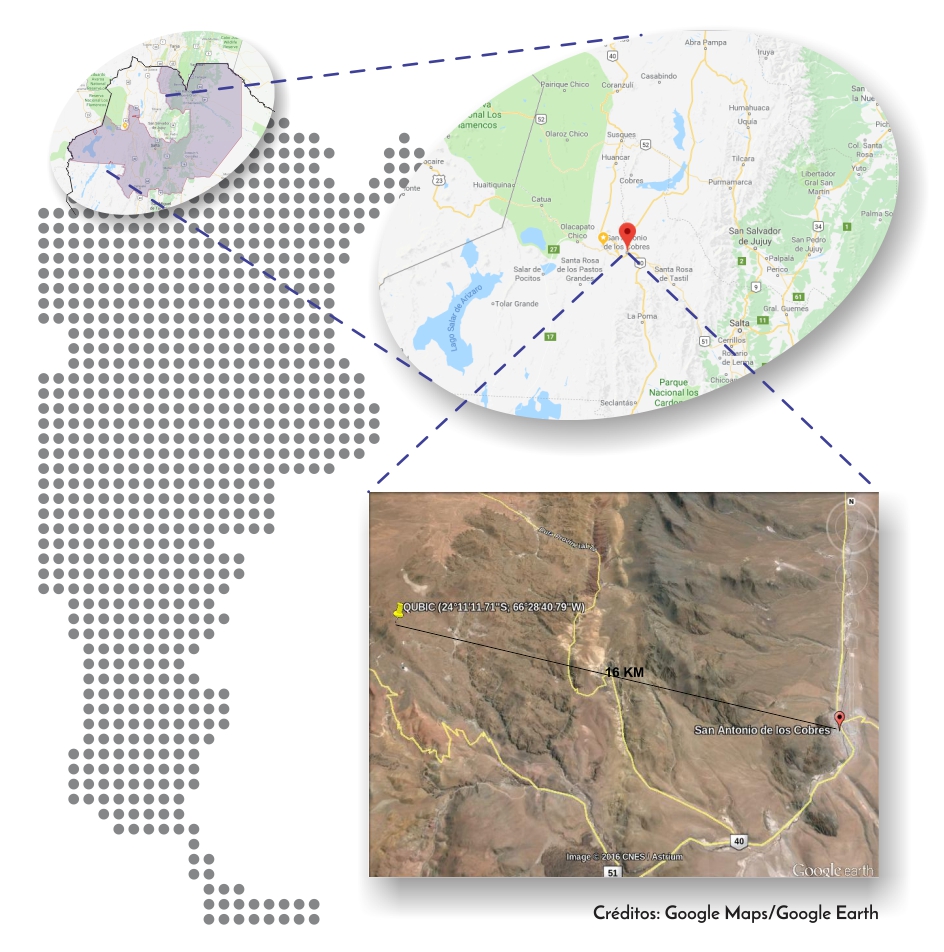The choice of site for large astrophysical measurements depends on a number of factors, including those related to sky clarity, temperature, wind speed and relative air humidity (which is the critical parameter if you are trying to record microwave, as humidity affects the sensitivity of the instrument). Geology, accessibility, communications (particularly internet access), local support and the possibility of incorporating local staff of different levels are also part of these factors.
The Alto Chorrillos site had already been evaluated and chosen to install a radio telescope called Large Latin American Millimeter Array (LLAMA), a product of Argentine scientific cooperation.
Brazilian. To do so, Conicet obtained an area of 400ha as a loan for twenty years from the provincial government. For QUBIC a little more than 1ha is needed.
The geographic coordinates of QUBIC are:
24.186971 South, 66.478209 West
The location of this class of facilities will position the puna of Salta as a technological and astronomical pole at a global level, and will bring about the need to improve, among other things, the provision of energy, communications and access roads to the site, as well as to build in this and possibly in San Antonio de los Cobres, two venues that include laboratories and can be shared by QUBIC and LLAMA. In addition to certain economic benefits for the residents of San Antonio de los Cobres in the form of demand for goods and services, and job offer.


